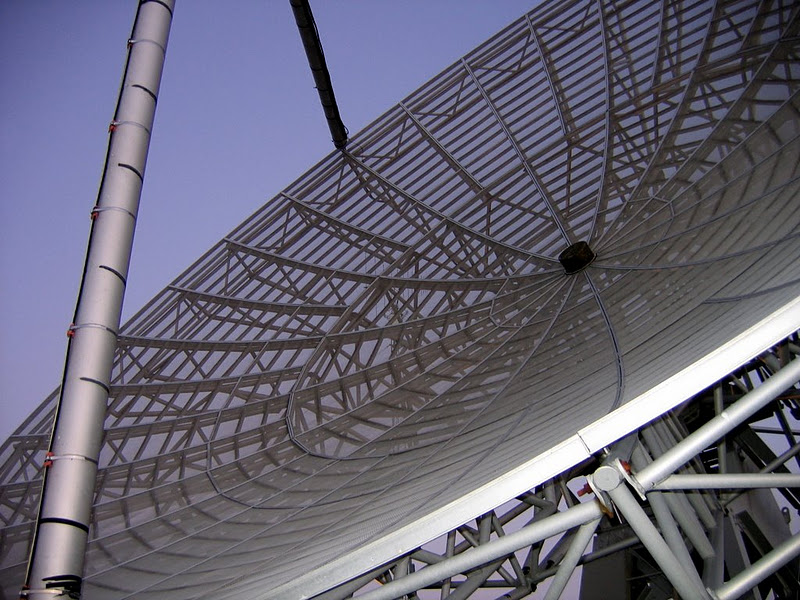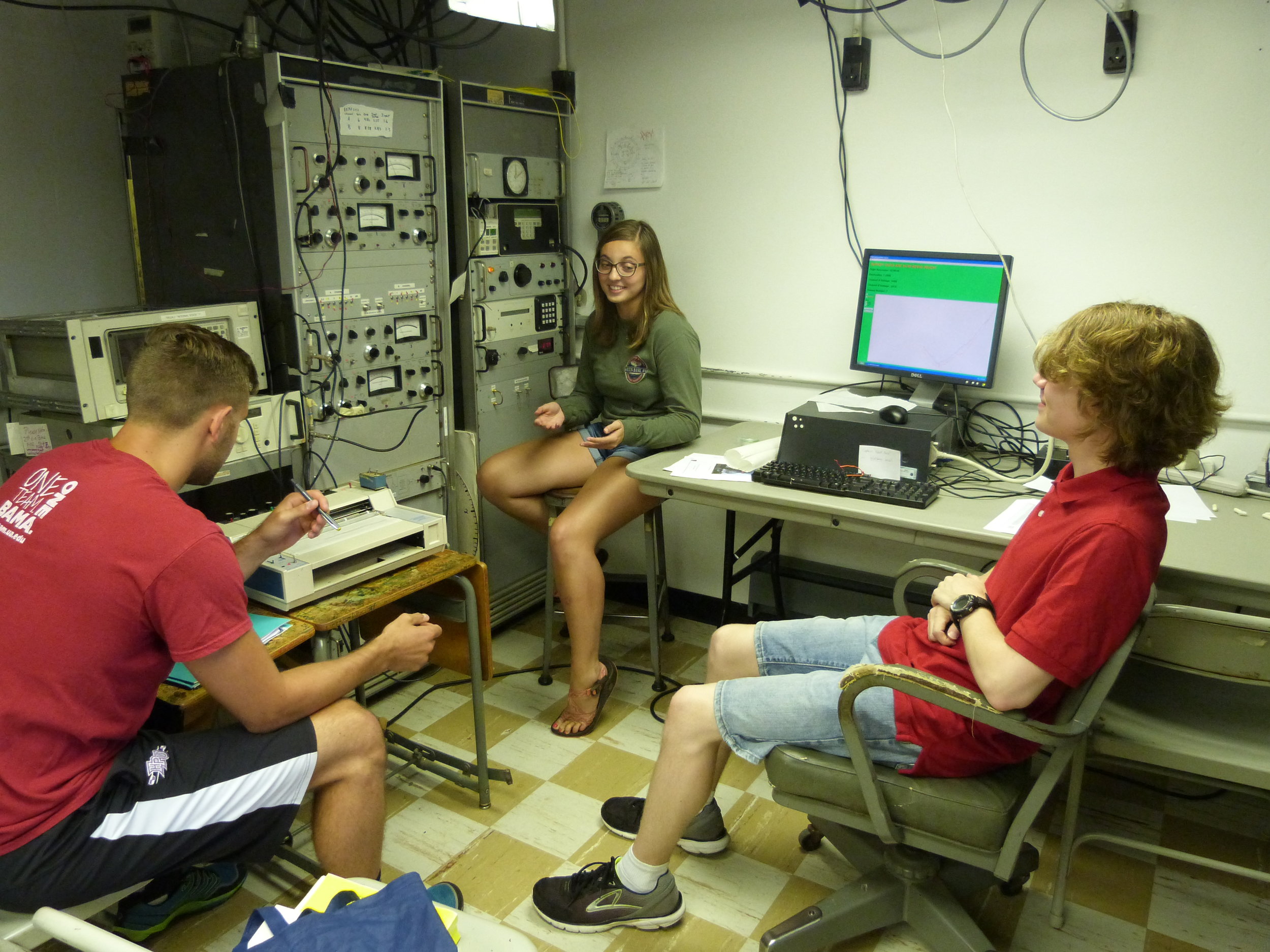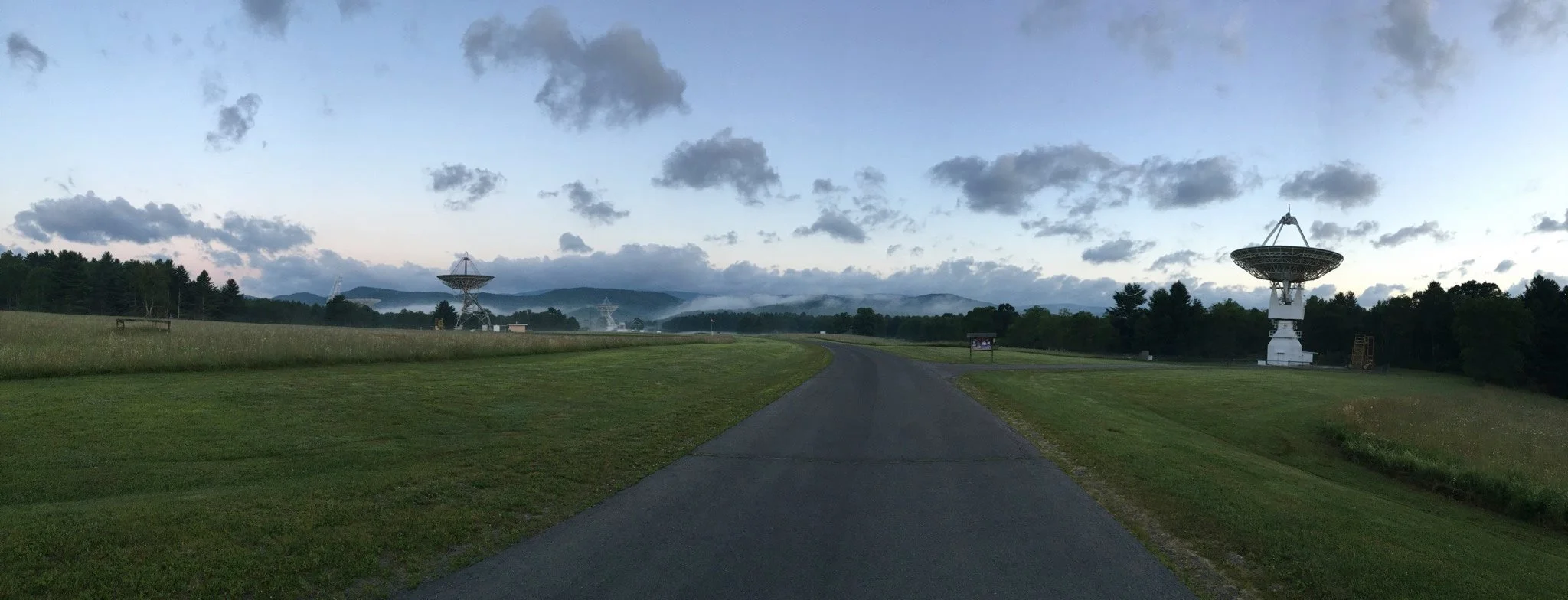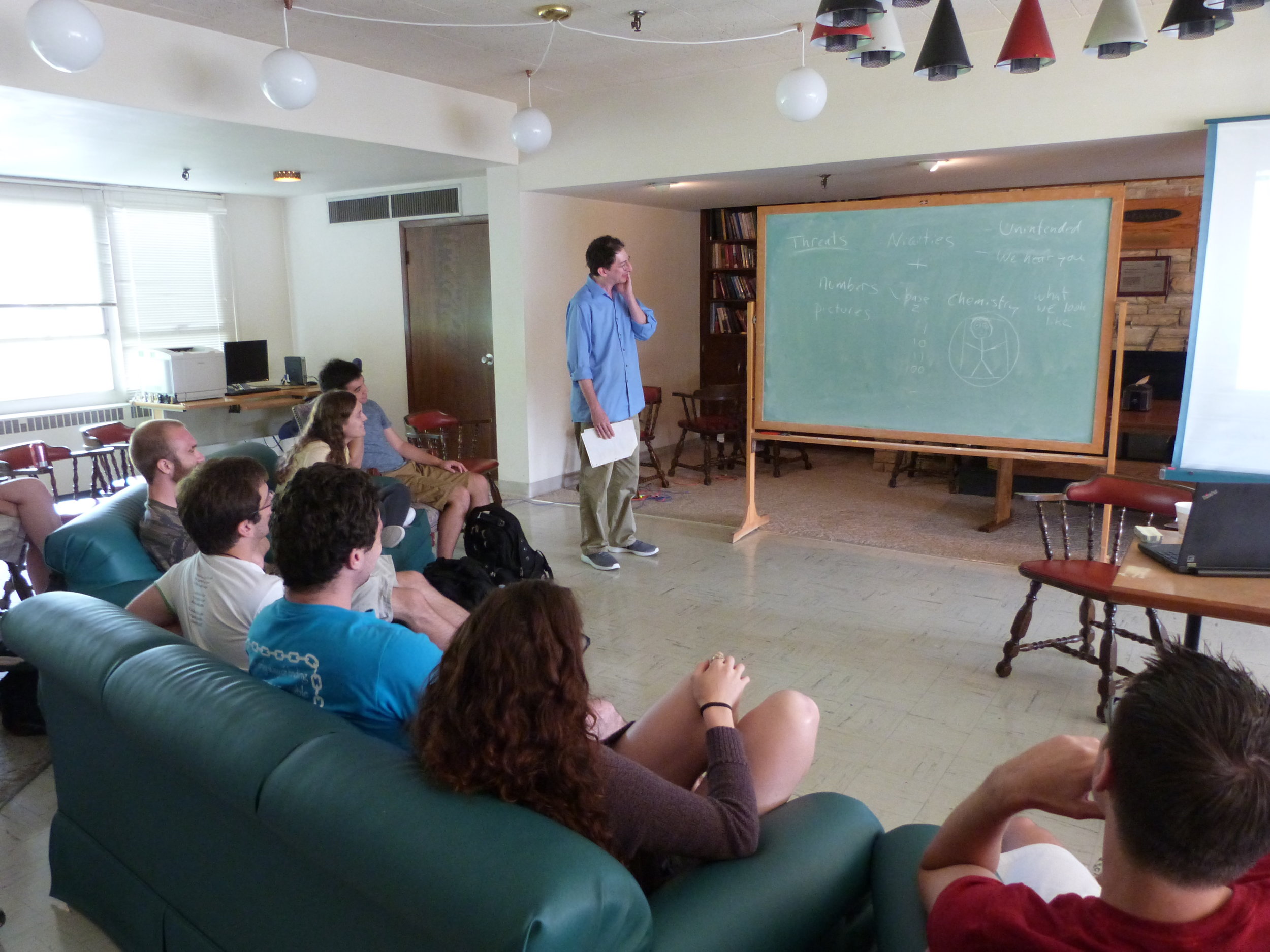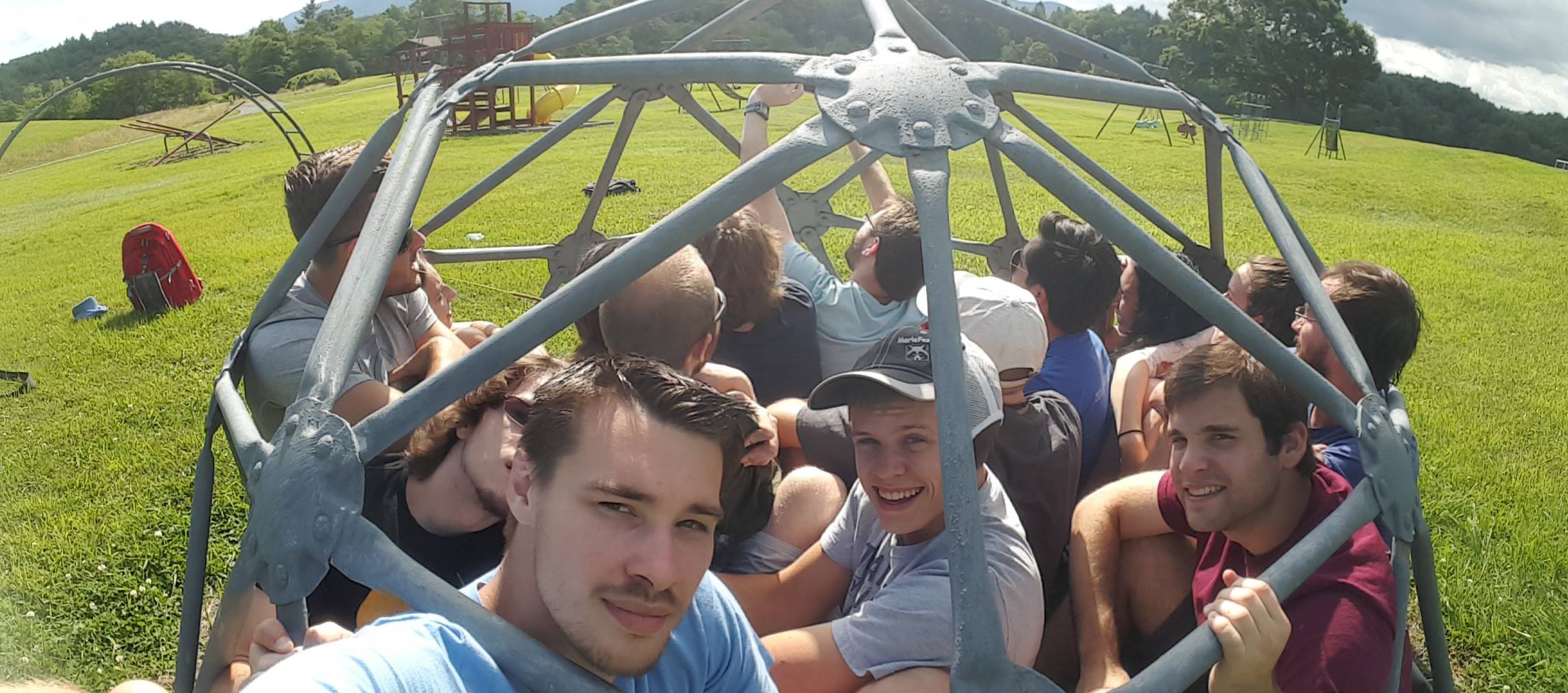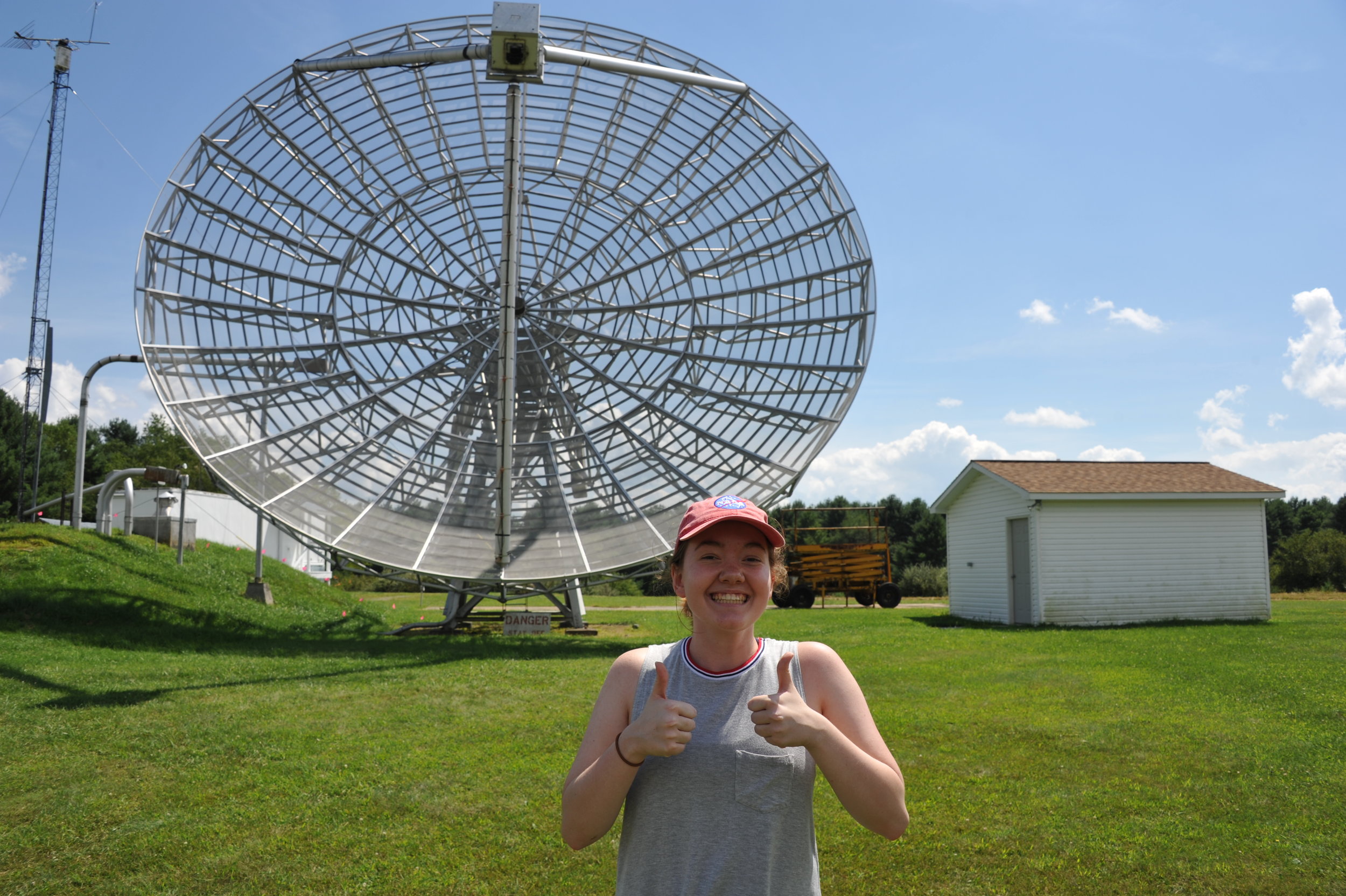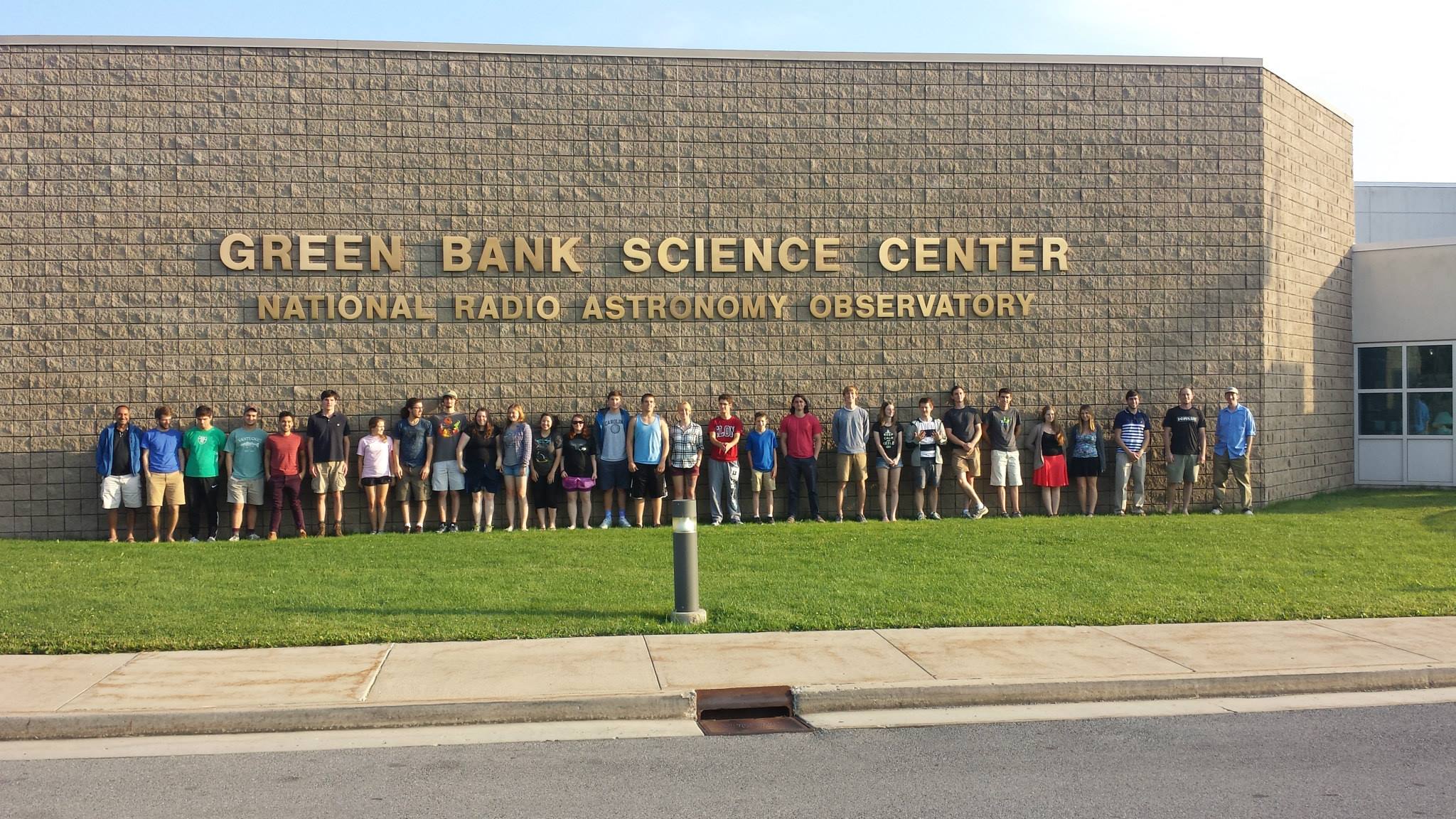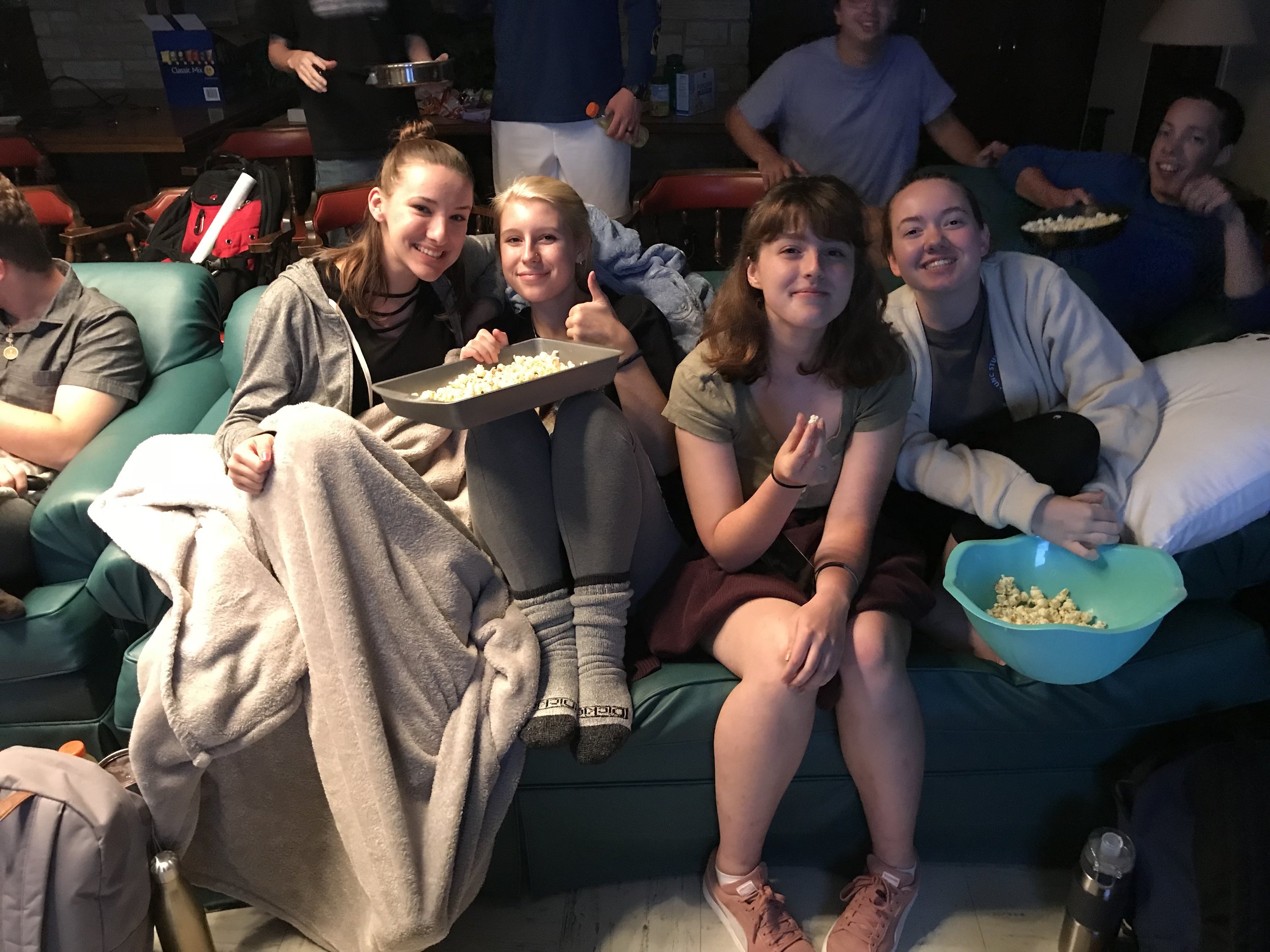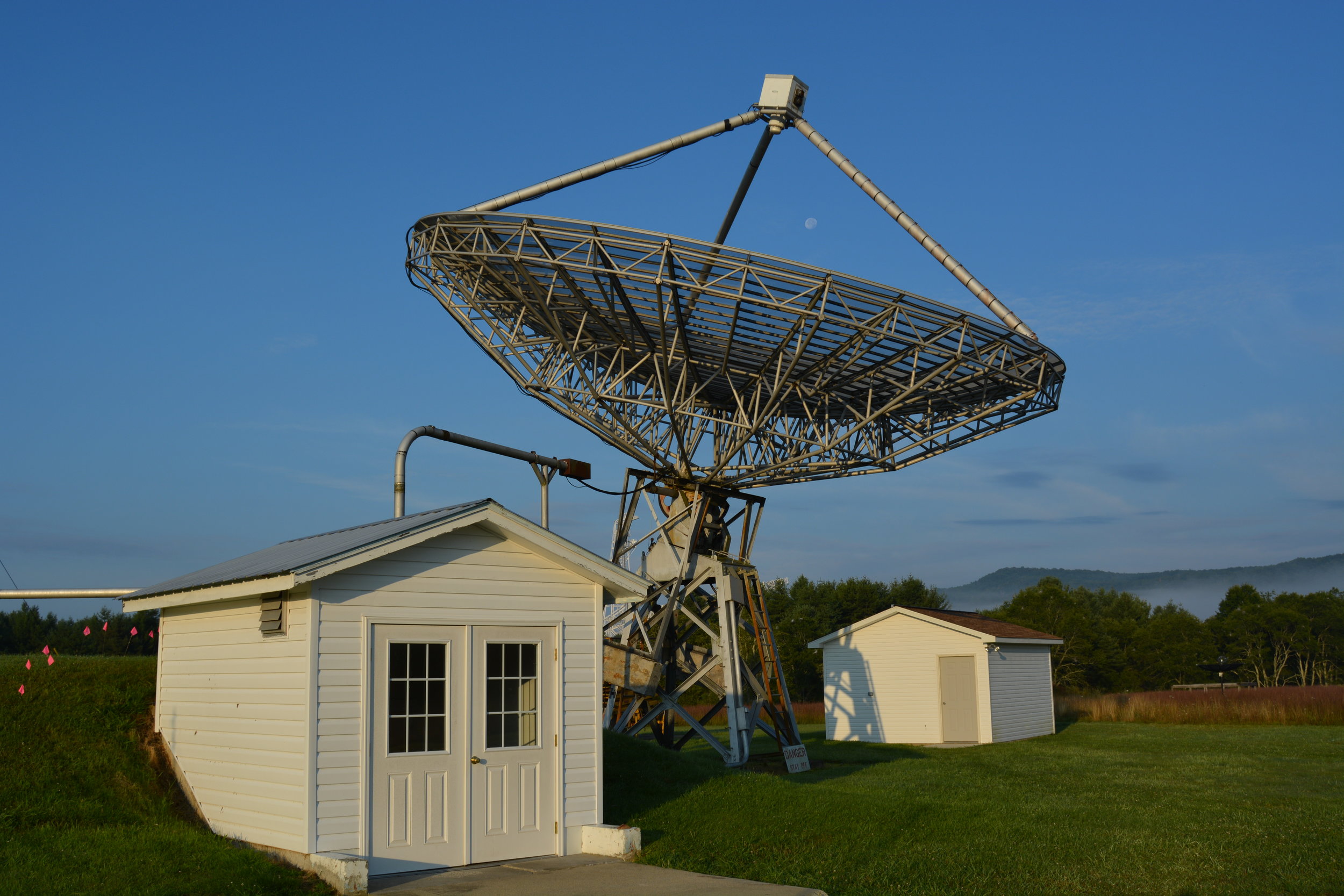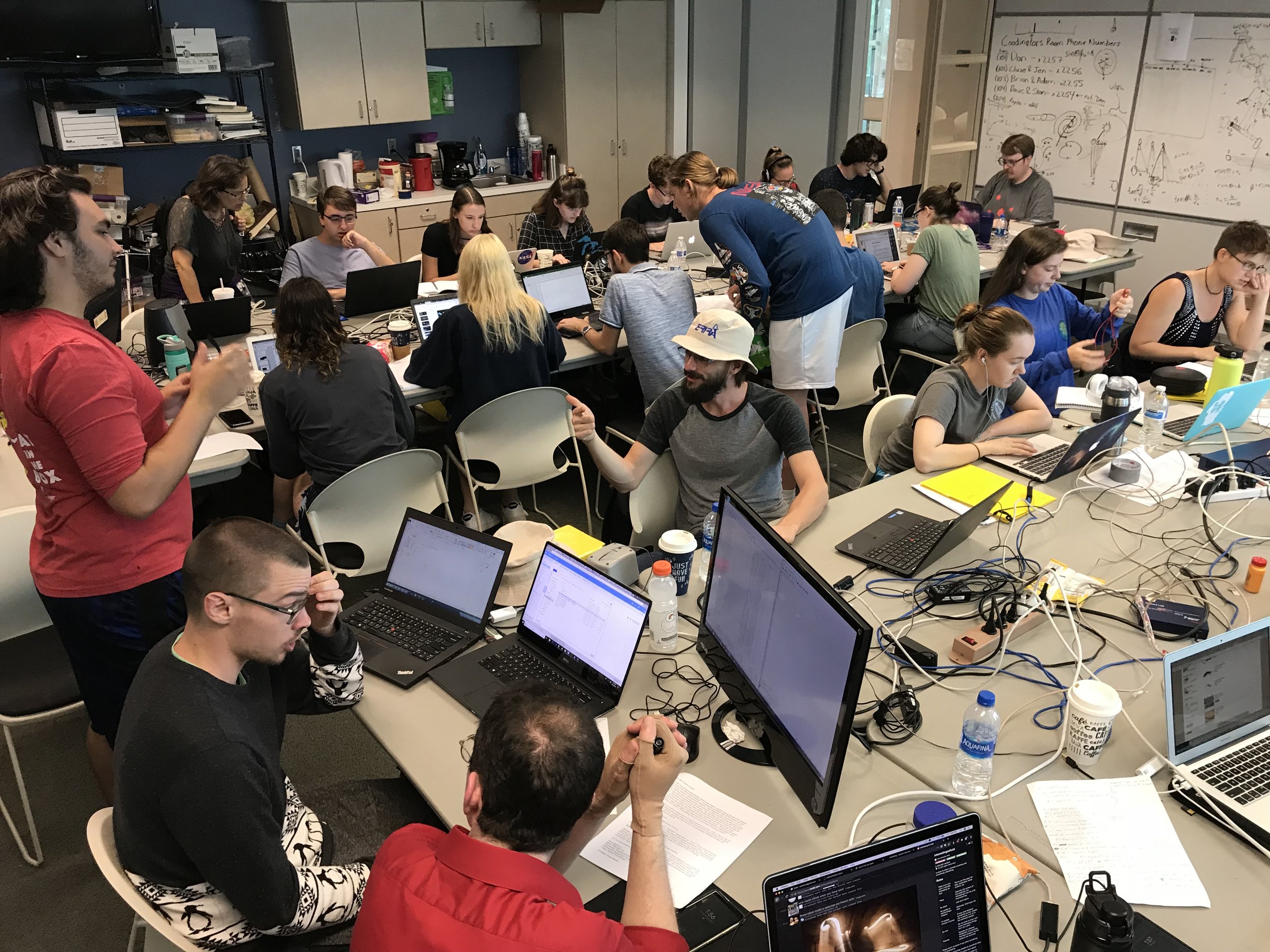Note: ERIRA 2024 will take place from Sunday, June 9 to Saturday, June 15 (Sunday and Saturday are travel days). Applications are due by Friday, March 22. Participants will be selected and notified by late March.
GBO’s fully manual 40-foot diameter teaching radio telescope.
Educational Research in Radio Astronomy (ERIRA)
ERIRA is a unique introductory research and field experience in astronomy. For one week each summer since 1992, Reichart and a small group of volunteer radio astronomy educators from across the country, have been taking 18 undergraduates to Green Bank Observatory (GBO) in West Virginia for a 24/7 crash course in radio astronomy, and for an introduction to the research experience. To participate, students submit a short, online application. Participants are selected based, almost exclusively, on their enthusiasm for the subject matter, and not on if they have prior research experience. This makes for a highly motivated group of primarily first- and second-year students, many of them on the cusp of deciding their major. Typically, about half are selected from UNC-Chapel Hill (mostly graduates of our introductory astronomy lecture and lab courses); the rest are selected from a national pool.
Students taking a break at the historic Jansky antenna on Reichart’s “Famous Backwards Walking Tour”.
Radio astronomy is a wonderful teaching tool: Unlike optical astronomy, it can be done during the day when students are naturally awake, and it can be done through most weather conditions. Coupled with optical astronomy, it is a powerful package: It fosters a better understanding of the electromagnetic spectrum and the important role that multi-wavelength observations play in 21st-century astronomy. Furthermore, it exposes students to a wide range of astrophysical phenomena – solar system objects, star-forming regions, supernova remnants, galaxies, quasars – and a wide range of emission processes – blackbody, synchrotron, bremsstrahlung, radio and optical emission lines – in ways that are fundamentally different from when they are experienced in only one waveband or the other. However, due to the prohibitive cost of building, operating, and maintaining sufficiently large radio telescopes, most astronomy programs do not teach radio astronomy, at least not in an observational or laboratory setting. Overcoming this is one of the driving principles behind ERIRA (introducing students to research is the other).
The students begin the week by learning how to use GBO’s fully manual 40-foot diameter teaching radio telescope and its neutral-hydrogen spectrometer (which came from GBO’s 300-foot diameter telescope after it collapsed). Working in teams of three, they map most of the Galactic plane and a few extragalactic and solar system regions of interest using data acquisition software of our own design. Given that the 40-foot is a transit telescope, this requires days of almost around-the-clock observing. The students then produce images of these regions, again using software that we have developed. From these images, they “discover” supernova remnants, star-forming regions, galaxies, and quasars, as well as solar system objects like the sun, the moon, and Jupiter.
GBO’s 20-meter diameter research-grade radio telescope, which was fully automated in partnership with UNC-Chapel Hill in 2013.
Meanwhile, the students begin work on smaller, more research-oriented projects, using both the manually controlled 40-foot and GBO’s now fully automated 20-meter diameter research-grade radio telescope. These projects include:
Producing a tri-color image of the Andromeda galaxy’s disk and estimating its mass
Measuring and interpreting the changing fading rate of the supernova remnant Cassiopeia A
Detecting Jupiter and showing that it cannot be a thermal source
Constructing an antenna to detect Jupiter’s moon Io interacting with Jupiter’s magnetic field
Measuring the rotation curve and mass distribution our galaxy using the 21-cm emission line of neutral hydrogen
Producing a tri-color image of a portion of our galaxy and showing that it is warped
Measuring the surface temperature of the moon
“Deep” and polarimetric imaging of the Orion Nebula and the North Polar Spur
Detecting pulsars and measuring their pulse profiles
Using the 40-foot to predict sunspot numbers and other measures of solar activity
Constructing an antenna to predict sunspot numbers and other measures of solar activity
Crunch night, before final presentations the next day.
We also offer a number of optical projects, using UNC-Chapel Hill’s Skynet/PROMPT optical telescopes at Cerro Tololo Inter-American Observatory in the Chilean Andes and around the world, which the students control remotely. Typically, each student selects two or three of these radio and optical projects. Unlike the mapping project described above, the students are responsible for the design of these projects, as well as for their observations. However, the volunteer educators are on hand to help. All teams present their results to their fellow participants on the final day, and for-credit participants additionally write two research-format papers (one on the mapping project, and one on one of their research projects) after the program ends. Recently, one of these papers evolved into a student-driven publication in a high-profile journal.
Between observing with the telescopes and working on their projects, the students attend a crash course on basic radio astronomy, special interest talks by the educators, research talks by both the educators and fellow participants who have already begun research at their home institutions, and a walking tour of the observatory, which includes the Green Bank Telescope, the world’s largest fully steerable telescope. Altogether, there is very little time for sleep. This is particularly true the night before final presentations. However, the students thrive and bond under these conditions and would not have it any other way.
For the educators, this week is more than one of service, but one of learning from each other, brainstorming new approaches, and trying them out on the spot with the most receptive group of students that we will ever find. In many ways, we get as much out of the experience as they do.
“Thank you again for giving me, and others, the opportunity to participate in such an awesome program. I not only learned so much about radio astronomy, but I learned more about myself and what I can do when pushed to the limits. I formed many friendships and made lasting memories during my stay at Green Bank, and for that I am grateful. Never has a week been so exhausting, yet so much fun! It was and probably will be the highlight of my undergraduate experience. Thanks again.”
